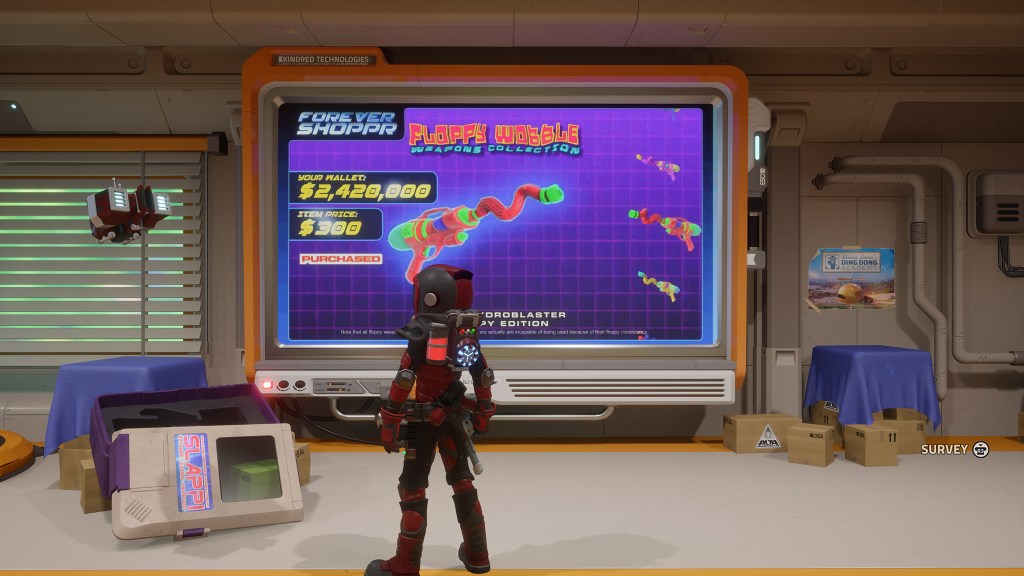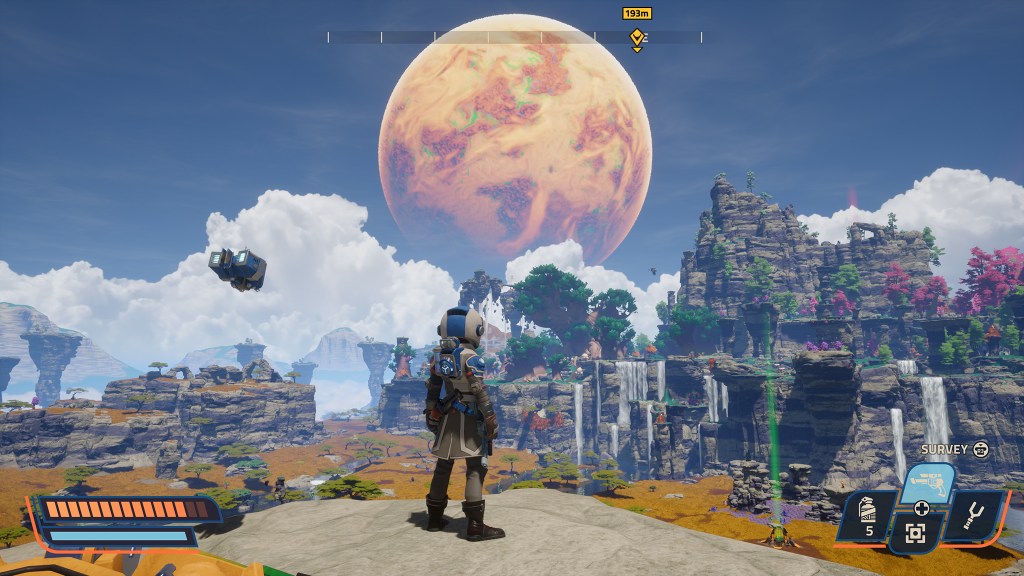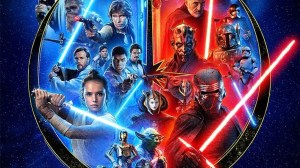The capitalistic chokehold around the video game industry has squeezed more and more types of games out of vogue and ensured that fewer genres have a chance to shine. Premium first-person shooters were a dime a dozen — many of which were trying to chase that Call of Duty cash flow — but they’ve mostly dried up now as studios attempt to make it big with the free-to-play live service trends that have sunk far too many. This gloomy trend has left games like Revenge of the Savage Planet by the wayside, which is something it revels in to great success.
Videos by ComicBook.com
Revenge has no battle pass, microtransactions, or any other sort of off-putting online hooks for players to interact with in order to make some arbitrary engagement stat go up. One of Revenge’s quirky live-action in-game commercials even pokes fun at these sorts of forever games with an ad for a fake game called Forever Alone 2, an “extreme live service permagame” with such features as the “Floppy Wobble Weapons Collection,” “Babble Pass,” “Season Pass Max,” and NFBs that are on the boogerchain. It even boasts that “all lootbuckets [are] up to 4% off in an unlimited configurable configuration of subscriptions.”

RELATED: Xbox Game Pass Adds One of 2025’s Biggest Games This Month
All of its loud commercials are Tim and Eric Awesome Show, Great Job!-style surrealist trips that reinforce the game’s strange vibes and corporation-driven dystopia, but this one in particular sticks out because of how much it feels like a statement. It’s such an extreme send-up excoriating the braindead C-suite-approved nonsense that Revenge decidedly is not.
The sentiment clearly comes from a personal place for developer Raccoon Logic, a team that had to be reformed after Google bought the developer (when it was Typhoon Studios) and closed it down shortly after. Game director Alex Hutchinson noted how the massive corporation often had unrealistic demands like making cloud-exclusive games and said Google was “not the smartest,” asserting that there is a “reason why intelligence and wisdom are different stats in D&D.” The game’s story of being laid off while in cryo sleep after traveling for over 100 years in deep space is surely fitting.
Revenge’s unique attitude is borne out in the gameplay, as well. Instead of being a massive open world full of nothing of importance, Revenge features four planets with manageably sized maps. Players are encouraged to scan its alien flora and fauna as they poke around for upgrade materials and experiment with its reactive world. It’s a simple loop fueled by its modesty, riding that line of having stuff to do but not too much stuff to do almost perfectly. It’s like a more freeform version of Metroid Prime in that sense since it’s built around scanning, getting stronger, and unlocking more areas with new tools.
But even with a clear influence like that, Revenge succeeds because of how it compiles its many parts together and douses it with its own Grob-flavored sauce. Combat is relatively standard but works because of how its many elements interact with each other. Enemies can explode with different elemental effects or coat the ground in some sort of reactive goop, which can create a chain reaction of effects. The game could use more of this type of slapstick pandemonium and better emphasize this interactivity for solving puzzles — fire and fiery explosions are weirdly sometimes treated as different things — but this sort of reaction-driven playground means gunplay isn’t just simply pointing and firing.

Exploration similarly works from a standard base and is augmented through Revenge’s unique approach. The aforementioned digestibility of the worlds makes getting around them more enticing since it isn’t going to take dozens of hours to clean out each one. And because it doesn’t need to dole out its upgrades over 120 hours, most of them actually change the game and are therefore enticing to unlock. One of the later upgrades lets players grapple to anything, completely opening up the traversal, making movement much more fluid, and ensuring that upgrades are even more of a blast to gather. It’s disappointing that it forces waypoints on the screen at all times and immediately pinpoints each collectible, therefore downplaying the player-driven exploration it could benefit from, but it’s refreshing for a game like this to yield a decently sized world without falling victim to bloat.
Revenge of the Savage Planet’s achievements are further highlighted when put in the context of two recent games: Assassin’s Creed Shadows and Clair Obscur: Expedition 33. The former is a soulless sequel that lacks a coherent vision because of its misguided intention of trying to appeal to everyone, while the latter is a new series with some obvious influences that refracts those inspirations through its own lens to create something entirely its own. Revenge and Clair Obscur were also mainly developed by core teams of about 30 people, both of which are headed by former Ubisoft employees. People shouldn’t have to escape large studios in order develop more creative games, but, despite the fruit they can yield, that’s unlikely to change since many publishers are still focused on going all-in on massive titles.
Revenge of the Savage Planet makes fun of the big budget machine that spits out vapid cash grabs that have had their identities focus tested out of them, yet isn’t just a silly satire. It’s a throwback to the nearly nonexistent tier mid-budget games that were allowed to be a little more unique and tautly designed. Revenge of the Savage Planet doesn’t break huge barriers and likely isn’t going to shatter sales records, but it’s a goofy adventure that soars high enough at what it does and is confident in what it is, and gaming could always use more of that.








